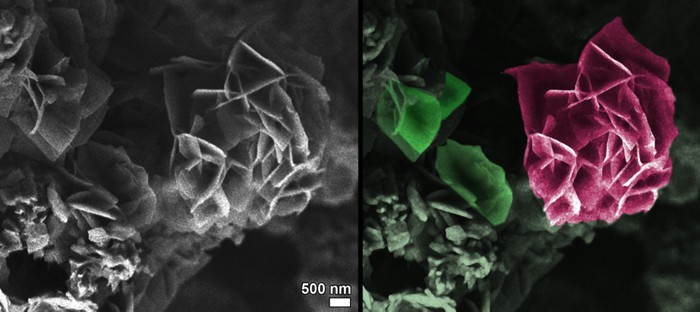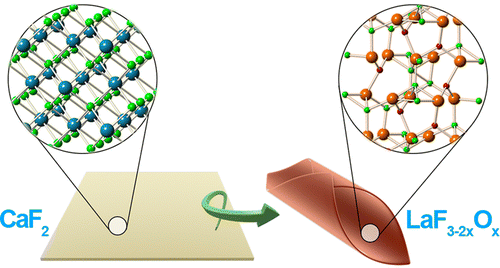My doctoral and postdoctoral research focused on the synthesis of functional inorganic and hybrid nanomaterials for applications in defense, medicine and energy storage. My research interests lie in the interface of nanoscience and inorganic chemistry, and I enjoy incorporating research publications and small-scale experiments and demonstrations in my course curricula.
Metal fluoride nanosheets
We report 1–2 unit-cell-thick CaF2 nanosheets, which can be converted topochemically into ∼20 × 5 nm scroll-like tubes of LaF3–2xOx nanosheets. These results demonstrate novel metal fluoride nanochemistry and a new scrolling mechanism.
Boron oxide nanoparticles
A sonochemical approach in the presence of a capping agent was employed to produce approximately 4–5-nm-sized B2O3 NPs, including the 10B isotopically enriched form. The B2O3 NPs can be further modified through a facile, one-step ligand-exchange process. The NPs were nontoxic in Chinese hamster ovarian cells up to 1.7 mM.
Cross-linked porous polyurethane
We report the discovery that a perhydroxylated dodecaborate cluster ([B12(OH)12]2−) can act as an inorganic polyol, serving as a molecular cross-linker in the synthesis of polyurethane-based materials. We further demonstrate how the inherent robustness of the utilized boron cluster can effectively enhance the thermal stability of the produced polyurethane materials incorporating [B12(OH)12]2− building blocks compared to analogous polymers made from carbon-based polyols.

Nanoflowers of boron oxide
Our research was featured on ‘c&en’ magazine in their Chemistry in Pictures photo gallery. We directed nanosheets of boron oxide to form these nanoroses using a solvothermal reaction with a capping agent. Such images remind us that science is a great architect, and the nanoworld can be controlled to resemble the natural world!
Nanoscale metal borides
We describe the top-down nanostructuring of a metal boride using SrB6 as an example. Our methodology leads to the formation of <100 nm SrB6 nanoparticles. This chemistry opens new solution-based modification and processing options for metal borides.
Cross-linked metal oxides
In this perspective article, we highlight several recent developments in cross-linked hybrid metal oxides, focusing on chemical cross-linking techniques to enrich their properties. We discuss future directions of this cross-linking approach that could enable further manipulation of these materials.

Enhancing Cycling Stability of Tungsten Oxide Supercapacitor Electrodes via a Boron Cluster-Based Molecular Cross-Linking Approach
We report our discovery of utilizing perhydroxylated dodecaborate clusters ([B12(OH)12]2-) as a molecular cross-linker to generate a hybrid tungsten oxide material. We further demonstrate how these robust B12-based clusters in the resulting hybrid tungsten oxide material can effectively preserve specific capacitance and reduce charge transfer resistance and response time compared to pristine WO3.




